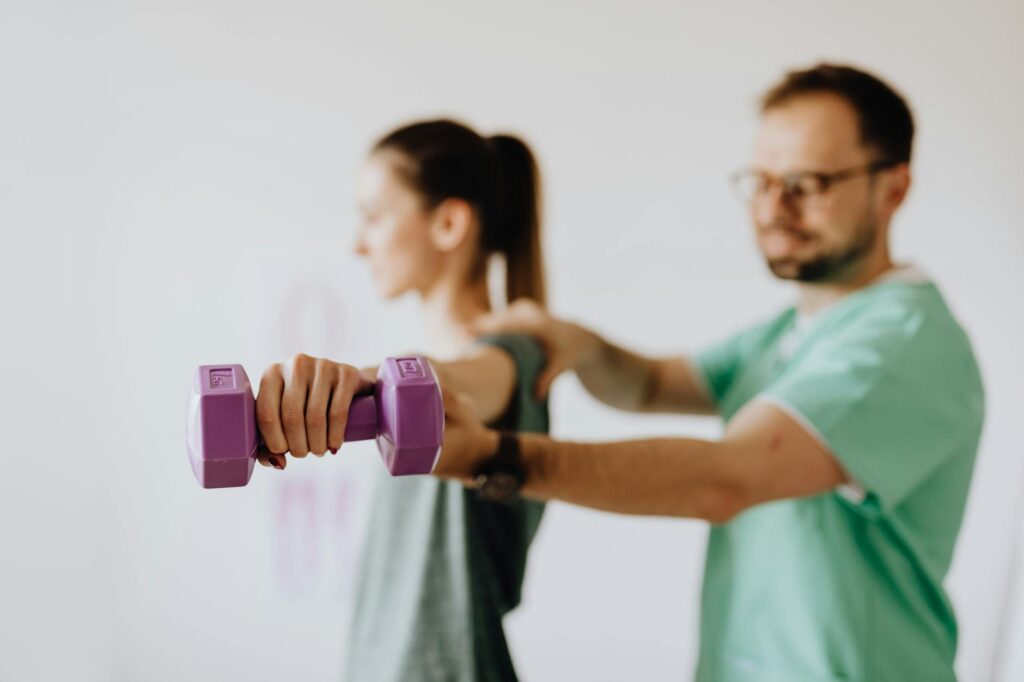Why did we do this study? Hospital stays for inpatient rehabilitation soon after an acquired brain injury (ABI) last only a week or two. Consequently, much rehabilitation occurs in post-hospital settings. However, there is not much scientific information about post-hospital rehabilitation. The Foundation to Advance Brain Rehabilitation (FABR) is devoted to research to increase knowledge about this portion of the continuum of care. We started with a study to better understand the characteristics of participants in each of the various types of post-hospital brain injury rehabilitation programs.
What is post-hospital rehabilitation? Early rehabilitation in the hospital usually focuses on improving basic abilities like moving about, feeding yourself, and using the toilet. Post-hospital rehabilitation includes programs in which people work over longer periods of time to further improve their functional abilities so they can get back to their families, their homes and their community. In addition to continuing to work on basic abilities, post-hospital rehabilitation helps people improve higher level skills like communication, memory, managing emotions, and getting back comfortably to family, social, and community living.
What are the types of programs? The various types of programs are described in greater detail elsewhere on the FABR.org website. Briefly, Behavioral Neurorehabilitation is an inpatient or residential program that aims to help people with severe behavioral problems. Residential Neurorehabilitation is an inpatient or residential program that works with those who can benefit from 24-hour care and intensive rehabilitation. Home & Community Neurorehabilitation is designed for people who need intensive rehabilitation and can live in their own homes with support from family and significant others. In Day Treatment, participants come to a facility to receive several therapies throughout the day. Participants in Outpatient rehabilitation also receive several therapies throughout the week at a facility although usually not as intensively as in Day Treatment. In all the above programs, an interdisciplinary team provides different types of therapy and works together to help the participant make good and rapid progress. Supported Living programs are different than the intensive rehabilitation programs because the goal of supported programs is not further improvement but rather to help participants sustain the progress that they made previously in rehabilitation.
How we did this study: We examined demographic and injury-related characteristics and functional abilities for over 2,000 participants in the 6 different program types. People with traumatic brain injury, stroke, or other ABI (for example, from suffocation or disease) were included. Functional abilities were assessed with the Mayo-Portland Adaptability Inventory (MPAI-4).
What we found: The main difference between participants in the various programs was the extent and type of functional limitations that required rehabilitation. Behavioral program participants generally were male and had traumatic brain injuries with severe limitations in physical and cognitive abilities and the most severe limitations in emotional, behavioral, and interpersonal functioning. Residential participants also had severe limitations overall but less severe behavioral and interpersonal difficulties. Although Home & Community participants had less severe limitations in some areas than Behavioral and Residential participants, their difficulties were generally worse than Day Treatment and Outpatient participants. Participants in Day Treatment and Outpatient programs had significant but milder limitations. Their goals may have focused on further developing specific abilities and returning to full participation in family and community life. Those in Supported Living generally were male and had traumatic brain injuries resulting in severe limitations that require long term support. The figure below shows how participants differed on the MPAI-4 on admission to the different types of programs. Higher scores indicate greater functional limitations.

Take home points:
-
- Different types of post-hospital brain injury rehabilitation programs are designed to best serve individuals with different severity and types of functional limitations.
-
- Other factors play a role in selecting the type of program that is appropriate for an individual. For example, individuals who would benefit from very intensive rehabilitation and have excellent family support may do as well in Home & Community programs as in a Residential program. On the other hand, if Home & Community rehabilitation is not available in the area where the person lives, Residential rehabilitation will be a good option.
-
- Importantly, another study (Salisbury et al: Outcomes of Six Specific Types of Post-Hospital Brain Injury Rehabilitation Programs) shows that participants who are treated in the right program make excellent progress in each type of program.
This summary is based on a scientific article published in a peer-reviewed journal: Salisbury DB, Parrott D, Altman IM, Eicher V, Logan DM, McGrath C, Walters GJ, Malec JF. Distinguishing Characteristics of Admissions to Various Types of Posthospital Brain Injury Rehabilitation Programs. Journal of Head Trauma Rehabilitation. Available online ahead of print at:
FABR (Foundation to Advance Brain Rehabilitation) is a one-of-a-kind alliance between leading brain injury rehabilitation organizations from across the United States to improve outcomes in the rehabilitation field. The partnership allows the organization to aggregate outcome data to launch the only know collaborative database in the United States that captures the impact of brain injury rehabilitation following acute care.

